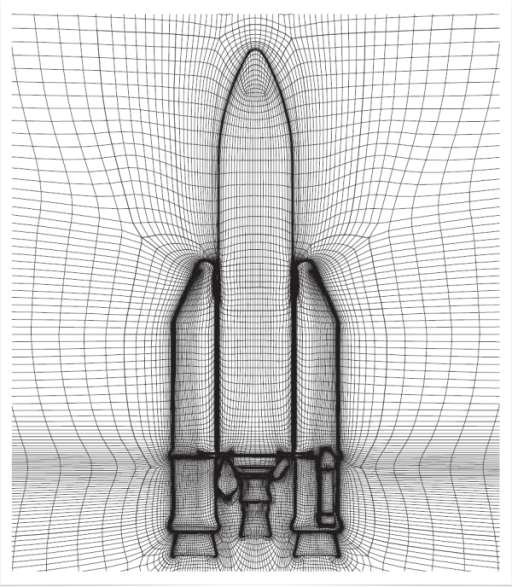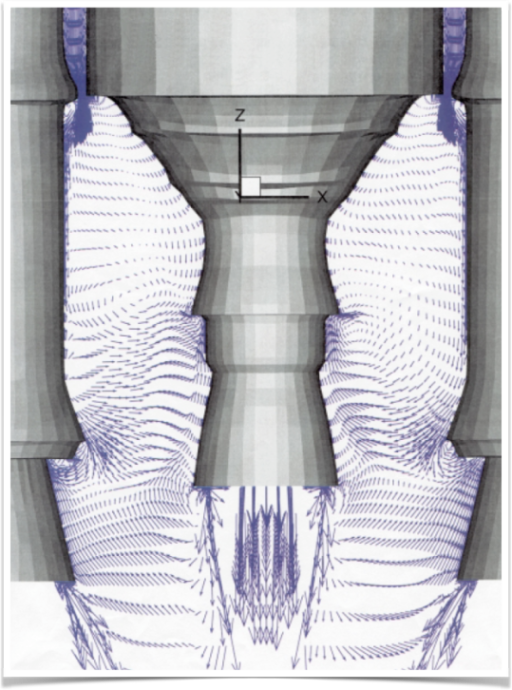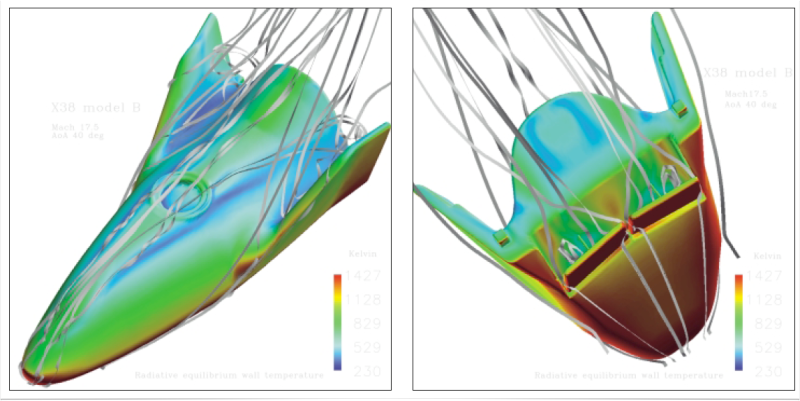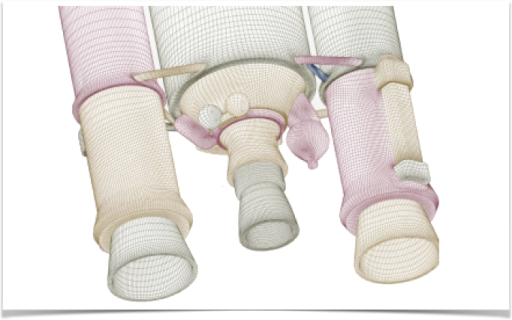Back to aerospace
About ArianeSpace
Arianespace is currently the world's largest commercial satellite launcher. Much of its success is due to the Ariane-5 launch system. Araine-5 has broken many recent records in the commercial launching of satellites, including the largest number of successful commercial launches in a year, and highest payload carried by a commercial launcher.
Even though Ariane-5 is arguably the most successful commercial rocket-launcher, the design of the Ariane-5 rocket faced many challenges in the beginning. The Ariane-5 rocket has to produce enough thrust to accelerate an 8 ton satellite to more than 25000 Mph and have enough control to place it in a geo-stationary orbit above the earth.
The engineering challenges in the design stem from immense mechanical loads, hypersonic flows, huge variations in temperature and pressure, instability problems and many other design challenges which require superior engineering solutions.
Many specialized design tools and sophisticated experiments were used in the design of Ariane-5. One of the major design challenges involved the aero-thermodynamic analysis of the rocket and the whole launch system. Aero-thermodynamic analysis involves the combination of the study of flow and heat transfer relations, and also involves calculation of reacting flow when integrating the combustion.
Launch Systems
Accurate analysis of the flow and heat-transfer are key to controlling the choice of the trajectory, guidance, navigation, and also for the thermal-protection systems, propulsion systems and performance of the launch system as a whole.

Computational fluid dynamics (CFD), which involves the computational modeling of the aero-thermodynamics, was a powerful tool in the design process. CFD was used for studying many aspects of Ariane-5 performance and design. This included the overall drag assessment during takeoff, unsteady buffeting loads at transonic speed, maximum steady state load at around Mach 2, booster separation, jet-impact during staging, solid booster radiation, and studying local aerothermodynamics such as local heating.
The need for high accuracy required not only a very robust CFD software to solve the complex aero-thermodynamic flow, but also extensive validation by experiments and a superior grid generation package. Modeling complex flow at high accuracy requires very high quality grids. GridPro was chosen as the main grid generation software for the European Space Agency's (ESA) Aero-thermodynamics group because of its ability to produce very high quality multi-block grids on complex geometries.

Martin Spel was one of the engineers at the European Space Agency's Department of Aerothermodynamics, performing CFD simulations on space vehicle geometries. He stated: "It was clear that GridPro was the only grid generation software which could fit our needs here. When you have complex geometry, and require a high quality grid for computations in transonic, supersonic or hypersonic flow, GridPro is the clear choice. Other grid generation software just cannot maintain the same level of grid quality when the geometry becomes as complex as the Ariane-5 launch system".
Apart from using many commercial CFD codes, computations on GridPro grids were performed with "Lore", which has been developed specifically to model heat transfer and flow at such high speeds. The figure shows a GridPro grid on the Ariane-5 launcher and the corresponding pressure solution calculated by Lore. The complex flow calculated is also shown as velocity vectors in the next figure.
An experimental setup of a model of the Ariane-5 was setup to validate the results produced and the CFD results were validated. It was found that GridPro enabled the CFD codes to produce accurate results and get the best out of their CFD codes.
Other Applications
Apart from using many commercial CFD codes, computations on GridPro grids were performed with "Lore", which has been developed specifically to model heat transfer and flow at such high speeds. The figure shows a GridPro grid on the Ariane-5 launcher and the corresponding pressure solution calculated by Lore. The complex flow calculated is also shown as velocity vectors in the next figure.
An experimental setup of a model of the Ariane-5 was used to validate the results produced and the CFD results were validated. It was found that GridPro enabled the CFD codes to produce accurate results and get the best out of their CFD codes.
Apart from the successful use of GridPro to model the entire launch system, GridPro is also being used at the ESA to model many other designs and space vehicles. A recent calculation performed on the X-38 space vehicle is shown here. Apart from superior quality of results, another advantage of using GridPro's grid generation system is the ability to model small changes in the flap movement in X-38 automatically to study the effects of flap deflection. This is illustrated in the figure.
GridPro enabled the European Space Agency to achieve superior results on Ariane-5 leading to better analysis and insight in the design. To learn how GridPro can help you achieve similar success, please contact us.

